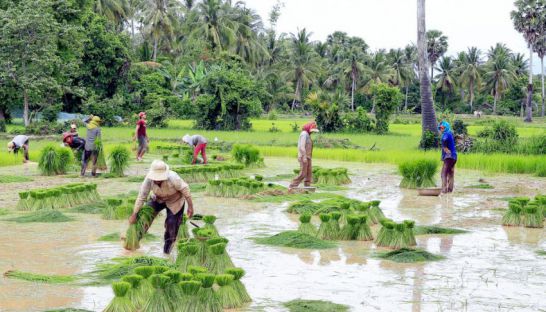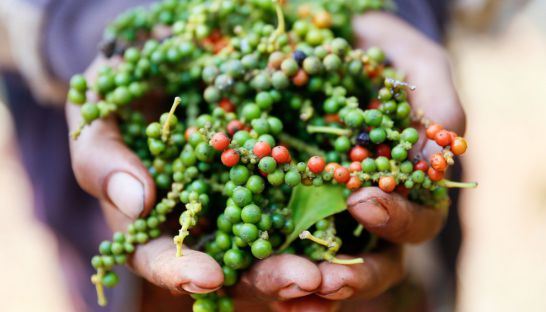China’s appetite driving rice export growth as demand continues to outstrip supply
China’s appetite driving rice export growth as demand continues to outstrip supply
Cambodian rice exports increased marginally during the first half of the year as export companies push to fulfil higher quotas destined for China.

Rice exports totalled 288,562 tonnes in the first six months of the year, an increase of 7.6 percent compared to the same time last year, according to the latest data published by the Secretariat of One Window Service for Rice Export Formality.
Exports to China accounted for 94,000 tonnes compared to France’s 37,000 tonnes and Poland’s 25,000 tonnes.
Despite the uptick in growth, Hean Vanhan, undersecretary of state at the Ministry of Agriculture, admitted that the figures showed a slow growth trend. He urged the private sector to increase capacity and secure more international orders to strengthen export potential.
“Even though the numbers for the first six months are positive, it is still a small amount and unless the private sector can secure more large-scale contracts, this trend could continue until the end of the year,” he said.
He projected that at the current pace Cambodia could at best send out 600,000 tonnes of rice in 2017 – falling once again far short of its target of 1 million tonnes.
Despite Cambodia obtaining a 200,000 tonnes quota for 2017 from China, which will be bumped up to 300,000 tonnes next year, Vanhan said demand still greatly outstripped domestic supply, with industry projected to produce 5 million tonnes of paddy rice this year.
“While we gained the quota from China, the demand still falls short of our supply,” he said. “We should not only depend on the Chinese market because it has a lot of export barriers.”
Moul Sarith, secretary-general of the Cambodia Rice Federation (CRF), doubted that exports would reach 600,000 tonnes this year. He said this was due to a lack of bilateral agreements that would spur trade in the sector.
“In order to gain new quotas for expanding rice exports, we need the government to help the rice sector by trying to get better government-to-government deals,” he said. “[The CRF] always stands behind the sector to speed up production and promote exports.”
Nevertheless, Sarith added that international prices were starting to look favourable, with fragrant rice increasing to $690 per tonne compared to $630 per tonne last year, while white rice was valued at about $450 per tonne, a $30 increase.
“This year our rice industry is in a better situation than it was last year,” he said. “However, we still are not as competitive compared to the neighbouring countries.”














